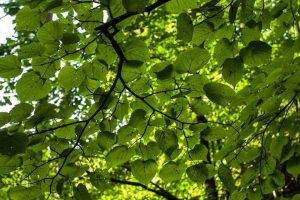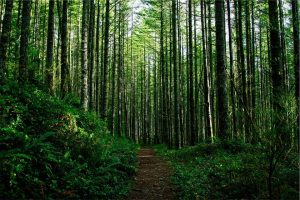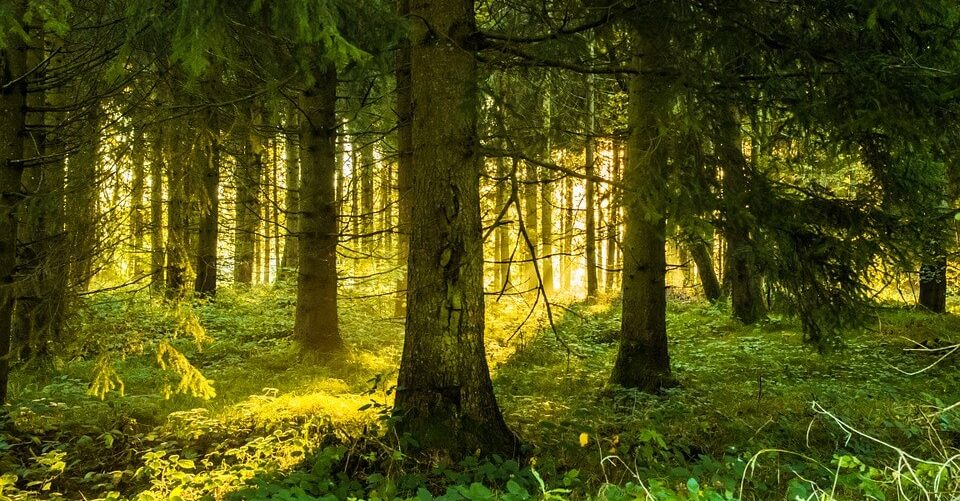If you’re not sure how your arboretum differs from your earlywood, our glossary is the place to clear things up.
If you’d like to reproduce it on your website, just drop us a line – happy to help!
Acre
An area of land measuring 43,560 square feet. A square 1-acre plot measures 209 feet by 209 feet; a circular acre has a radius of 117.75 feet.
Angiosperm
A plant that has true flowers and bears its seeds in fruits. In temperate zones, many angiosperms are deciduous trees, while in tropical zones, many are evergreen trees. Examples include oaks, willows, maples and birches.
Annual Ring
The combination of one earlywood layer (light coloured) and one latewood layer (dark coloured) seen in a cross-section of a tree. One annual ring usually represents one year of growth.
Arboretum
A botanical garden devoted to trees.
Artificial Regeneration
The growth of new trees through seeding and planting.
Bark
The tough exterior covering of a woody root or stem that protects the tree from injury caused by insects and other animals, by other plants, by disease and by fire.
Best Management Practices
Procedures employed during harvesting and/or timber stand improvement activities that reduce erosion and prevent or control water pollution.
Biltmore Stick
A stick similar to a yardstick in appearance, but usually about 25 inches long. One side is scaled to read a tree’s diameter by holding the stick horizontally at arm’s length and against the tree at breast height. A Merritt hypsometer runs along one edge of the stick and is scaled to read a tree’s height from 66 feet away from the tree’s base. These two measurements are then used to find the tree’s volume according to the volume table printed on one face of the stick.
Biodiversity
The variety of life forms in a given area; can be categorised in terms of number of species, variety of plant and animal communities, genetic variability or some combination of these categories.
Board Foot
A unit of measure equal to a board that is 1 inch thick, 12 inches long and 12 inches wide, or 144 cubic inches.
Bole
The main trunk of a tree.
Boreal Forest
The sub-Arctic forest of the high northern latitudes that surrounds the North Pole and is mainly composed of coniferous trees.
 Broadleaf
Broadleaf
A class of trees that have broad, flat leaves of many different shapes; most are deciduous; also called hardwood because most broad-leaved trees have harder wood than do conifers. Examples include oak, hickory, maple and ash.
Buffer Strip
A narrow zone or strip of land, trees or vegetation bordering an area. Common examples include visual buffers, which screen the view along roads, and streamside buffers, which are used to protect water quality. Buffers may also be used to prevent the spread of forest pests.
Cambium
A thin layer of specialised cells within a tree’s trunk that divide to produce new inner bark cells to the outside and new sapwood cells to the inside. The narrow band of cells that is responsible for the tree’s growth in circumference.
Canopy
The “roof” of the forest formed by the crowns of the tallest trees.
Carbon Sink
A forest, ocean, or other natural environment viewed in terms of its ability to absorb carbon dioxide from the atmosphere.
Carrying Capacity
The maximum number of healthy wildlife that a given habitat or area can support without degradation of the habitat.
Cellulose
The scientific name for wood fibre.
Chain
A distance of 66 feet.
Clearcut
A harvesting and regeneration method that removes all trees within a given area. Most commonly used in pine and hardwood forests that require full sunlight to regenerate and grow efficiently.
Clinometer
An instrument that is held at eye level to read stump height and merchantable or total height when standing 50 and 66 feet from the base of the tree. The difference between the two readings yields the height.
Competition
The struggle between trees to obtain sunlight, nutrients, water and growing space. Every part of the tree, from the roots to the crown, competes for space and food.
Conifer
A class of trees that are evergreen, have needle or scalelike foliage and conelike fruit; often called softwood. Examples include pine, hemlock, cedar and cypress.
Conservation
Planned management and wise use of natural resources for present and future generations.
Cord
A standard unit of measure equivalent to 128 cubic feet of round or split wood. A standard cord measures 4 feet by 4 feet by 8 feet. A face cord or short cord is 4 feet by 8 feet by any length of wood under 4 feet.
Cover
(a) Any plant that intercepts rain drops before they reach the soil or that holds soil in place;
(b) a hiding place or vegetative shelter for wildlife from predators or inclement weather.
 Crown
Crown
The branches and foliage at the top of a tree.
Cruise
A survey or inventory of forestland to locate timber and estimate its quantity by species, products, size, quality or other characteristics.
Deciduous
A plant that sheds its leaves at the end of the growing season.
Decomposition
The process by which organic material such as leaves and branches are broken down by bacteria, fungi, protozoans and the many different kinds of animals that live in the soil.
Dendrology
The study of trees; tree identification.
Diameter at Breast Height (DBH)
Tree diameter measured at 4.5 feet above ground level.
Diameter Tape
A steel measuring tape that has a scale calibrated to read a tree’s diameter when wrapped around the tree’s circumference.
Earlywood
Wood cells produced at the beginning of a tree’s growing season that are generally light in color. Also called springwood.
Ecology
The science or study of the relationships between organisms and their environment.
Ecological Succession
The gradual change of plant and animal communities over time.
Ecosystem
A loosely defined area consisting of numerous habitats.
Edge
The transition between two different types or ages of vegetation.
Endangered Species
Any species that has been classified by the U.S. Fish and Wildlife Service or a state wildlife agency as being in danger of extinction throughout all or a significant portion of its range. A species is endangered when the total number of remaining members may not be sufficient to reproduce enough offspring to ensure survival of the species.
Endemic
A species or taxonomic group that is only found in one particular country or geographic area.
Environment
The sum of all external living and non-living conditions and influences that affect the development and survival of an organism.
Erosion
The wearing away or removal of land or soil by the action of wind, water, ice or gravity.
Even-Aged Management
A forest management method used to produce stands that are all the same age or nearly the same age by harvesting all trees in an area at one time or in several cuttings over a short time. This management method is commonly applied to shade-intolerant conifers and hardwoods.
Evergreen
A group of trees that do not lose all of their leaves every year but go through a gradual replacement by dropping only their oldest leaves each year. Instead of being bare in winter, these trees have leaves all year.
 Foliage
Foliage
The leaves of a tree or other plant.
Forage
Vegetation such as leaves, stems, buds and some types of bark, that can be eaten for food and energy.
Forb
Any herb other than grass.
Forest Floor
The lowest level of the forest that is made up of tree seedlings, dead leaves and needles, grasses, ferns, flowers, fungi, and decaying plants and logs.
Forest Management
Caring for a forest so that it stays healthy and vigorous and provides the products and values the landowner desires.
Forest Stewardship Plan
A written document listing activities that enhance or improve forest resources (wildlife, timber, soil, water, recreation and aesthetics) on private land over a five-year period.
Forest Type
A designation or name given to a forest based on the most abundant tree type or types in the stand; groups of tree species commonly growing in the same stand because their environmental requirements are similar. Examples of North Carolina forest types include (a) pine; (b) mixed hardwood; (c) cypress, tupelo and black gum; and (d) oak and hickory.
Forestry
The art and science of managing forests to produce various products and benefits including timber, wildlife habitat, clean water, biodiversity and recreation.
Fuel Loading
A buildup of easily ignited leaves, pine straw, branches and trees on the forest floor.
Germinate
To begin to grow, usually following a period of dormancy and in response to favourable conditions. For example, the sprouting of a seedling from a seed.
Group Selection
(a) The removal of small groups of trees to regenerate shade-intolerant trees in the opening (usually at least 1/4 acre);
(b) a specific type of selective cutting.
Gymnosperm
A plant whose seeds are not enclosed in flowers. Most gymnosperms produce their seeds on the surface of the scales of female cones and are pollinated by wind. Conifers are the most common type of gymnosperm.
Habitat
An area in which a specific plant or animal naturally lives, grows and reproduces; the area that provides a plant or animal with adequate food, water, shelter and living space.
Hardwoods
Trees with broad, flat leaves as opposed to coniferous or needled trees. Wood hardness varies among the hardwood species, and some are actually softer than some softwoods.
Hectare
A metric unit of square measure, equal to 100 ares (2.471 acres or 10,000 square metres).
Heartwood
The central core of a tree, which is made up of dense, dead wood and provides strength to the tree.
High-Grading
A harvesting technique that removes only the biggest and most valuable trees from a stand and provides high returns at the expense of future growth potential. Poor quality, shade-loving trees tend to dominate in continually high-graded sites.
Hypsometer
Any device used for measuring tree height.
Increment Borer
A hollow auger-like tool with a screw bit used to remove core samples from trees.
Invasive
Describes species introduced deliberately or unintentionally outside their natural habitats where they have the ability to establish themselves, invade, outcompete natives and take over the new environments.
Latewood
Wood cells produced at the end of the growing season that make up the darker section of an annual ring. Also called summerwood.
Lichen
A composite organism made up of a fungus in a co-operative partnership with an alga. Owing to this partnership, lichens can thrive in harsh environments such as mountaintops and polar regions. Characteristically forms a crustlike or branching growth on rocks or tree trunks.
Limiting Factor
Any requirement for wildlife survival that is in limited supply.
Mast
Fruits or nuts used as a food source by wildlife. Soft mast includes most fruits with fleshy coverings, such as persimmon, dogwood seed or black gum seed. Hard mast refers to nuts such as acorns and beech, pecan and hickory nuts.
Merritt Hypsometer
A scale that measures the number of 16-foot logs in a tree.
Multiple-Use Management
The management of land or forest for more than one purpose, such as wood production, water quality, wildlife, recreation, aesthetics and clean air.
Natural Regeneration
The growth of new trees in one of the following ways without human assistance: (a) from seeds carried by wind or animals, (b) from seeds stored on the forest floor, or (c) from stumps that sprout.
Naval Stores
Products such as turpentine, pitch and rosin that come from pine trees and are used in the construction and maintenance of wooden sailing vessels.
Phloem
The part of a tree that carries sap from the leaves to the rest of the tree. Also called inner bark.
Photosynthesis
Metabolic process characteristic of plants in which carbon dioxide is broken down, using energy from sunlight absorbed by the green pigment chlorophyll. Organic compounds are made and oxygen is given off as a by-product.
Plant Succession
The progression of plants from bare ground to mature forest.
Prescribed Burning
The practice of using regulated fires to reduce or eliminate material on the forest floor, for seedbed preparation or to control competing vegetation. Prescribed burning simulates one of the most common natural disturbances. Also called controlled burning.
Pulpwood
Wood used in the manufacture of paper, fiberboard or other wood fiber products. Pulpwood-sized trees are usually a minimum of 4 inches in diameter.
Reforestation
Reestablishing a forest by planting or seeding an area from which forest vegetation has been removed.
Release
To free a tree from competition with its immediate neighbours by removing the surrounding trees. This occurs naturally and artificially.
Renewable Resource
A naturally occurring raw material or form of energy that has the capacity to replenish itself through ecological cycles and sound management practices.
Resin
A group of sticky liquid substances secreted by plants that appear on the plant’s external surface after a wound.
Roots
The underground portion of a tree that helps anchor the tree in the ground and absorbs water and nutrients from the soil.
Rotation
The number of years required to establish and grow trees to a specified size, product or condition of maturity. A pine rotation may range from as short as 20 years for pulpwood to more than 60 years for sawtimber.
Salvage Cut
The harvesting of dead or damaged trees, or the harvesting of trees in danger of being killed by insects, disease, flooding or other factors in order to save their economic value.
Sawtimber
Wood of large enough size to be used to produce lumber for construction and furniture.
Sedimentation
The deposition or settling of soil particles suspended in water.
Seed Tree Cut
A harvesting method in which a few scattered trees are left in the area to provide seeds for a new forest stand. Selection of seed trees is based on growth rate, form, seeding ability, wind firmness and future marketability. This harvesting method produces an even-aged forest.
Selective Cutting
The periodic removal of individual trees or groups of trees to improve or regenerate a stand.
Shade-Intolerant Species
Trees that require full sunlight to thrive and cannot grow in the shade of larger trees.
Shade-Tolerant Species
Trees that have the ability to grow in the shade of other trees and in competition with them.
Shelterwood Cut
Removing trees in the harvest area in a series of two or more cuttings so that new seedlings can grow from the seeds of older trees. This method produces an even-aged forest.
Silviculture
The art, science and practice of establishing, tending and reproducing forest stands of desired characteristics. It is based on knowledge of species’ characteristics and environmental requirements.
Site Index
A relative measure of forest site quality based on the height (in feet) of the dominant trees at a specific age (usually 25 or 50 years, depending on rotation length). Site index information helps estimate future returns and land productivity for timber and wildlife.
Snag
A standing dead or dying tree.
Softwood
A tree belonging to the order Coniferales. Softwood trees are usually evergreen, bear cones and have needles or scale-like leaves. Examples include pines, spruces, firs and cedars. See conifer.
Species
A group of related organisms having common characteristics and capable of interbreeding. Loblolly and Virginia pine are common tree species that can interbreed.
Springwood
See earlywood.
Stand
A group of trees that are sufficiently the same in species composition and arrangement of age classes and condition so that they can be managed as a unit.
Streamside Management Zone (SMZ)
An area adjacent to a stream in which vegetation is maintained or managed to protect water quality.
Summerwood
See latewood.
Suppression
The process by which a tree loses its vigor due to inadequate light, water and nutrients.
Thinning
A tree removal practice that reduces tree density and competition between trees in a stand. Thinning concentrates growth on fewer, high-quality trees, provides periodic income and generally enhances tree vigor. Heavy thinning can benefit wildlife through the increased growth of ground vegetation.
Threatened Species
Any species that has been classified by the U.S. Fish and Wildlife Service or a state wildlife agency as likely to become endangered within the foreseeable future throughout all or a significant portion of its range. A threatened species has declining or dangerously low populations but still has enough members to maintain or increase numbers.
Transpiration
The loss of water through leaves.
Tree Caliper
A metal or wooden device consisting of an arm and two prongs, one of which is free to slide along a graduated scale on the arm. The prongs are placed against opposite sides of a tree to read its diameter on the scale.
Turpentine
A distilled chemical produced from tapping into a living pine and harvesting the sap.
Understory
The area below the forest canopy that comprises shrubs, snags and small tree. Because the understory receives little light, many of the plants at this level tolerate shade and will remain part of the understory. Others will grow and replace older trees that fall.
Wildlife
A broad term that includes nondomesticated vertebrates, especially mammals, birds and fish.
Wood
The solid interior of a tree.
Wood Chemicals
Chemicals that are found naturally in the various parts of a tree.
Xylem
The part of a tree that transports water and nutrients up from the roots to the leaves. Older xylem cells become part of the heartwood. Also called sapwood.
Reproduced with very kind permission from various sites including arkive.org, ncforestry.org,





